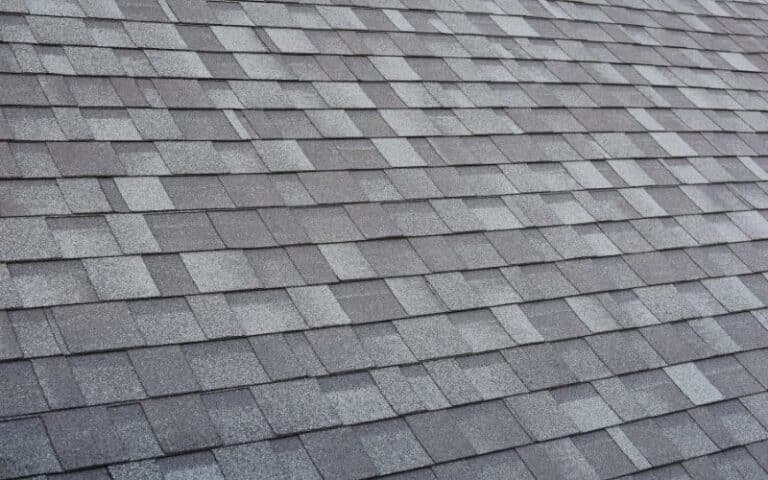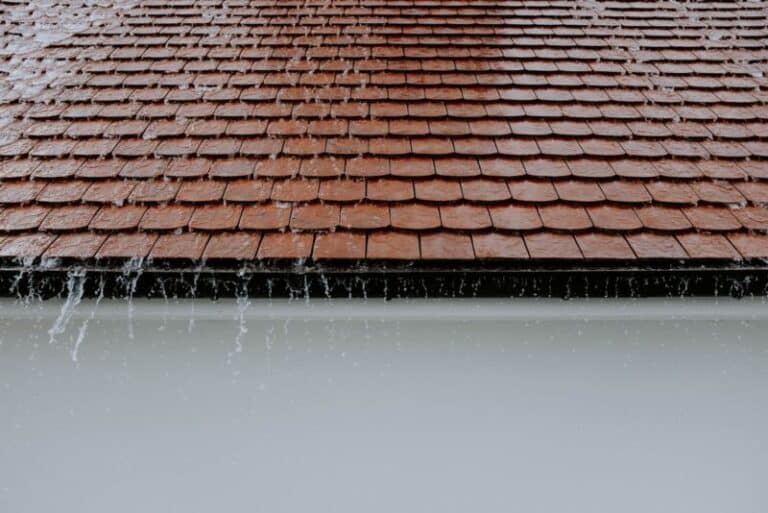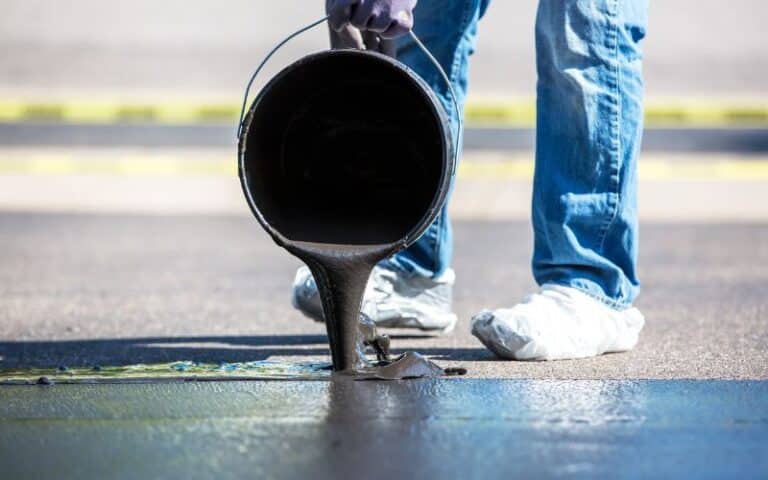A handful of people tend to apply thinsets on their ground before tiling since they firmly hold tiles to a concrete surface.
Their firmness and bonding strength are a result of cement, fine sands, and other additives that they contain. They have an edge over grouts because of their thinness and ease of use.
However, thinsets appear water-resistant because they retain water in places like the shower. Are they uniquely waterproof?
Thinset isn’t waterproof nor water-soluble because it doesn’t stop water from entering your tiles completely. However, thinset can help prevent water from going below your floor due to the bonds they create with the concrete and tiles. Moreover, if you need to double the waterproofing, apply waterproof substances.
Ready for a Roofing Quiz?
Is Versabond Thinset Waterproof?

Versabond thinset isn’t waterproof. But, it has a reliable bond strength that makes it a good brand of thinset to consider for tiles and floors.
Due to its modification, the Versabond thinset is handy for checking water absorption in wet places.
It has some moisture-resistant abilities because it’s modified with a reasonable proportion of latex. In essence, it’s a modified thinset mortar.
Is Latex Modified Thinset Waterproof?
Latex-modified Thinset isn’t waterproof but retains water better than the unmodified Thinset mortar.
The reason is that the modifier offers more bonding strength and has water resistance abilities.
The modified thinset or polymerized thinset is a product of combining fine sand, water, cement, and acrylic latex.
However, polymerized thinset depends on water/moisture to activate the additives that retain water.
Hence, once the water comes in contact with the modified thinset, the moisture activates the water retention additives to create crystals. These crystals safeguard the bond between the concrete and the tiles.
Therefore, you can easily deduce that the longer the water spends on the thinset, the more the thinset’s bond strength.
In addition, due to the high bonding strength in modified thinsets, they are best for tiles and wet places. On the contrary, unmodified thinset mortar is good as an exterior installation.
The downside of latex thinsets is that it takes a long time to dry completely. Their drying process requires enough air.
Is Thinset Mortar Waterproof?
The thinset mortar isn’t waterproof, but it’s water resistant. However, its substances will determine how much water it’ll hold.
The Cellulose in making thinsets is responsible for the water-retaining ability because Cellulose is a good water-retaining substance. As a result, you can apply them to the shower floor and walls.
However, the unmodified and modified thinset is different in compositions and performances.
The modified (polymerized) thinset outperforms the unmodified ones because they lack latex additives. But, the unmodified ones dry quickly.
How to Make Thinset Waterproof?
All you need to waterproof a thinset mortar is to apply a waterproof membrane and decoupling mats.
A waterproof membrane is a thin layer that has extremely water-resistant materials. It waterproofs the thinset and prevents water from reaching the subfloor when you apply it properly.
Note that; you must apply the membrane before the thinset and tiles. So, let’s learn more about waterproofing thinsets.
#1. Using a Waterproof Membrane
This method strengthens the bond of the thinset and restricts water. While applying it, some membranes without a sticky back will need gum to glue them to the surface.
Next, use waterproof sealing tape to close the corners and joints of the membranes.
After installing the waterproofing properly, spread the thinset uniformly on the membrane. Finally, arrange the tiles on the thinset.
Ensure you use Epoxy grout because normal grouts are water-resistant but not waterproof.
#2. Using a Decoupling Mat
Decoupling mats work very well on surfaces that expand at different rates. When the tile attaches to the surface, the tiles or the joints of the thinset crack.
Hence, the decoupling mat on the surface receives the stress responsible for the cracks and creates a waterproof layer.
If you choose to use the decoupling mats, go for an unmodified thinset mortar because of its quick dryness.
The mortar will absorb moisture well from the adhesive since the decoupling mat doesn’t hinder the adhesive from receiving moisture. So, the bond between the decoupling mat and tiles becomes strong.
Let’s go into the details of the waterproofing method.
#1. Step 1: Ready the Surface
The surface must be clean to have the best result. Remove every form of dirt, stain, paint, grease, glue, etc., from the surface. If there are holes, close them.
#2. Step 2: Cut the Ditra
Measure the surface and cut the Ditra to the right size of the surface. To fit it properly, align them on the floor to see if they’ll cover the entire floor.
#3. Step 3: Use the Adhesive
Apply the adhesive to the floor with a material that will do it evenly. The presence of the adhesive will create a very strong bond for the tiles.
#4. Step 4: Put the Ditra
Rightly place those Ditra mats on the thin-set mortar with the fleece side facing down. Look closely to notice the alignment of the Ditra.
If you aren’t satisfied, correctly position the Ditra on the thin-set so that the Ditra will completely cover the adhesive.
Use sealing tape and some thinsets to waterproof the joints by covering them. You can also use some additional sealants to seal the remaining areas. Gradually, you’re preparing the area for the installation of the tiles.
#5. Step 5: Install the Tiles
Make a mixture of thinset mortar with the unmodified thinset. After mixing, spread the thinset mortar uniformly on the decoupling mat with a trowel.
Also, spread the thinset on the rear side of the tiles with the trowel. You can now go ahead to arrange the tiles accordingly.
Begin arranging the tiles on the mat from the center; you can move to the other sides.
Is it Safe to Get Butcher Block Wet? (Read This First)
When it comes to using a butcher block in wet conditions, caution is needed. While butcher blocks are designed to withstand moisture, excessive exposure to water can cause damage. To maintain its integrity, ensure you dry the surface thoroughly after cleaning and avoid leaving spills for long periods. Taking these precautions will help in keeping your butcher block safe and sturdy.
Can I Use a Regular Thinset for Pool Tile?
Ordinarily, you can’t use a regular thinset for pool tiles. But, if you still intend to use the usual thinset mortar for your pool’s tiles, then you need to do a lot of waterproofing.
#1. Waterproofing
The first step is waterproofing, which comes in two ways. The first method is to get a direct bond waterproofing layer and spread it under the thinset.
The waterproofing membranes are easy to come by in most home supplies stores. A common ingredient in these layers is Epoxy.
And people prefer to use a paintbrush to apply the waterproof layer because a paintbrush will spread the membrane evenly.
The second way of waterproofing is mixing the thinset mortar and some waterproof additives before you apply the mixture.
During the drying process, the additives will gradually close the pores of the concrete and create a waterproof bond simultaneously.
However, the only setback with this method is that the force holding the tiles weakens and can make the tiles remove easily.
#2. Applying the Thinset
Following the waterproofing of the pool, you can go ahead to apply the thinset mortar and install the tiles.
You must ensure that you dry up the area you want to work on. Also, for best performance, use dry-set thinset mortar.
Spread the mortar on the area you’ve earlier waterproofed, and arrange the tiles. The next step is drying up; it takes days for the mortar to dry completely under normal conditions.
However, the mortar brand also depends on the time it will take to dry. Normally, it doesn’t exceed 14 days before you can fill the swimming pool with water.
And the long curing process’s importance is ensuring that the water’s force doesn’t eventually fall off the tiles.
#3. Applying the Grout Sealers
Some pores might be hiding. Therefore it’s necessary to seal the pores once more. Thus, apply a grout sealer between the tiles to double the water absorption resistance.
There are two types of sealer, but the latex grout sealer works better for waterproofing grout.
The latex grout sealer works irrespective of the temperature and can switch between wet and dry.
However, you can use an epoxy sealer. Still, its color will eventually fade due to exposure to the sun’s UV rays. But the durability of the epoxy seal is worthwhile.
Final Thoughts
Thinsets aren’t waterproof, but they can retain water to an extent. However, to waterproof your thinsets, you can apply waterproof membranes on them. All thinsets have unequal water-retaining capacity.
For instance, the modified thinset has latex additives to create strong bonds, unlike the unmodified thinset, which doesn’t form strong bonds but has a quick curing process.






